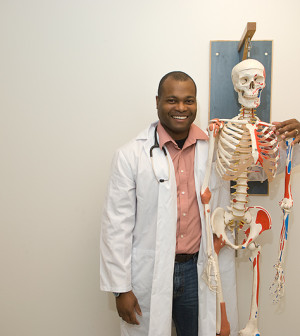- Skip Storing This Everyday Product in the Fridge Door
- Green Tea + B3 Pairing May Boost Brain Health
- Navigating Your Midlife Crisis: Embracing New Possibilities
- City Raccoons Showing Signs of Domestication
- Mapping the Exposome: Science Broadens Focus to Environmental Disease Triggers
- One Week Less on Social Media Linked to Better Mental Health
- Your Brain Changes in Stages as You Age, Study Finds
- Some Suicide Victims Show No Typical Warning Signs, Study Finds
- ByHeart Formula Faces Lawsuits After Babies Sickened With Botulism
- Switch to Vegan Diet Could Cut Your Greenhouse Gas Emissions in Half
Achilles Tendon Can Handle Downhill Running: Study


The Achilles tendon can handle downhill running better than previously thought, says a study that offers good news for distance runners.
The key is to transition gradually to downhill running, the Brigham Young University researchers noted.
“Runners can know it is safe to transition to downhill running and include it in normal training and racing,” study author Katy Andrews Neves said in a university news release. “Though there are greater forces placed on your body during downhill running, the benefits can outweigh the risks.”
She and her colleagues monitored 20 female runners while they ran on a treadmill at three grades — 6 percent downhill grade, level and 6 percent uphill grade — on separate days. None of the grades put the Achilles tendon, which runs down the back of the lower leg, at increased risk for injury, they discovered.
“Over time, runners adapt to the forces placed on their body, so even when the forces are higher (running downhill), if the adaptation process is gradual, the injury risk drops,” Neves said. “Our bodies are amazing and are very good at adapting to the conditions we put them in.”
The study was published recently in the Journal of Sports Science & Medicine.
It’s estimated that 52 percent of distance runners injure their Achilles tendon at some point, the researchers said.
More information
The American Academy of Physical Medicine and Rehabilitation has more about running injuries.
Source: HealthDay
Copyright © 2025 HealthDay. All rights reserved.










